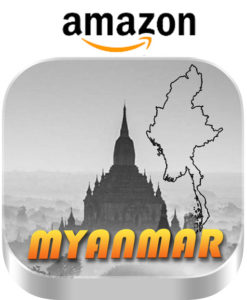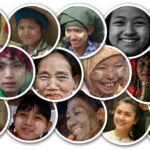Bagan Architecture
 Stupa or Pagoda
Stupa or Pagoda
The word ‘stupa’ means the pagoda, which is a solid spire or cylindrical shape with a domed or pointed top. The ones in Bagan were copied from the 7th century Pyu era pagodas such as Paya Gyi or Baw Baw Pagoda of Srikhetera.
To complete and consecrate the stupa the Hti or umbrella must be set atop the spire. It is an iron filigree structure with three, five or seven levels tapering like a pointed crown. At the apex of the Hti is a large cut crystal or in the famous pagodas, an orb paved with real diamonds. The gold or gilded banner set with gems swings free under this diamond orb.
The solid stupa is usually built over a relic chamber where Buddha’s relics or Buddha images of gold and silver are enshrined. When a stupa has to be enlarged, the original is never destroyed but is encased by a bigger one
The Shwezigon pagoda is the biggest encased spire, as discovered during renovations after the 1975 earthquake.
 Temples
Temples
They are the square or rectangular buildings of one or more stories the highest is the Thatbyinnyu, with three levels.
Early temples such as Pahtothamya have paintings with a caption written in Pali or Old Mon, while in later temples the Bamar language was almost exclusively used. These early temples, based on the Pyt era religious buildings, are of one storey under a sloping roof, with dark interiors lit only by a few perforated windows.
Stone blocks were commonly added to the brickwork in the corner, or arches to reinforce the strength of the structure. To reduce the mass and weight for the biggest temples, relieving vaults were built over barrel vaults as can be seen in the incomplete Pyathad; Gyi Temple. Secret passages were also built into the walls to ease the weight in temples such as the Thatbyinnyu, Gawtawpalin, and Htilominlo. Corridors or halls were built with cloister vaults, barrel vaults, half or 3/4 barrel vaults; narrow and steep staircases with corbelled or voussoir vaults were set within thick walls in man\ of the larger temples. These techniques were all evolved from the Pyu prototypes.
Numerous old bricks of Bagan temples are found to have names of far-flung towns incised on them, places that still exist to this day. Apparently the great King Anawrahta had sent out far and wide for building materials and Old texts record the mixing of cement as follows: 1 part Kya Zu sap (Terminalia citrina Roxb), 1 part molasses, 3 parts Ohnshit sap (Aegle marmelos Correa), 6 parts glue from buffalo hide, 22 parts Ohnton sap (Litsea glutinosa) and a handful of kapok.
One stone inscription listing the accounts of a pagoda says: “The price of paddy was one silver tical (equal to half an ounce) per basket, one tical gold equals 12 ticals of silver. The blacksmith was given 4 silver tical, the painter of the temple 70 tical.. .wooden rafters cost 7, the carver was paid 30, the sculptor 20, gold for the painting 2. The cost of mortar was 320 baskets of paddy, 300 bricks were 30 baskets, pounding plaster 120 baskets, the carver 60 baskets “etc.
Even those who were paid for a religious construction consider their our part of the merit, so not only the kings, queens or nobility donating the temples of Bagan but also the workers contributed to the greatness of Bagan.
 Other Religious Buildings
Other Religious Buildings
Apart from the stupa and temples, there are cave pagodas that you will see in Bagan tours where both cave and images were carved out of the living rock. There were also many monasteries or monastery complexes built by kings and nobility, at times within a large walled compound with pagodas, water tanks, wells, rest houses for traveling pilgrims, alms halls for donation ceremonies and storerooms. Slaves were donated to work in these monasteries as well as farmland or orchards of toddy palm to bring in food and income for the upkeep of the monastic complex There were also libraries for storing Buddhist texts and the ‘Thein ordination halls.








